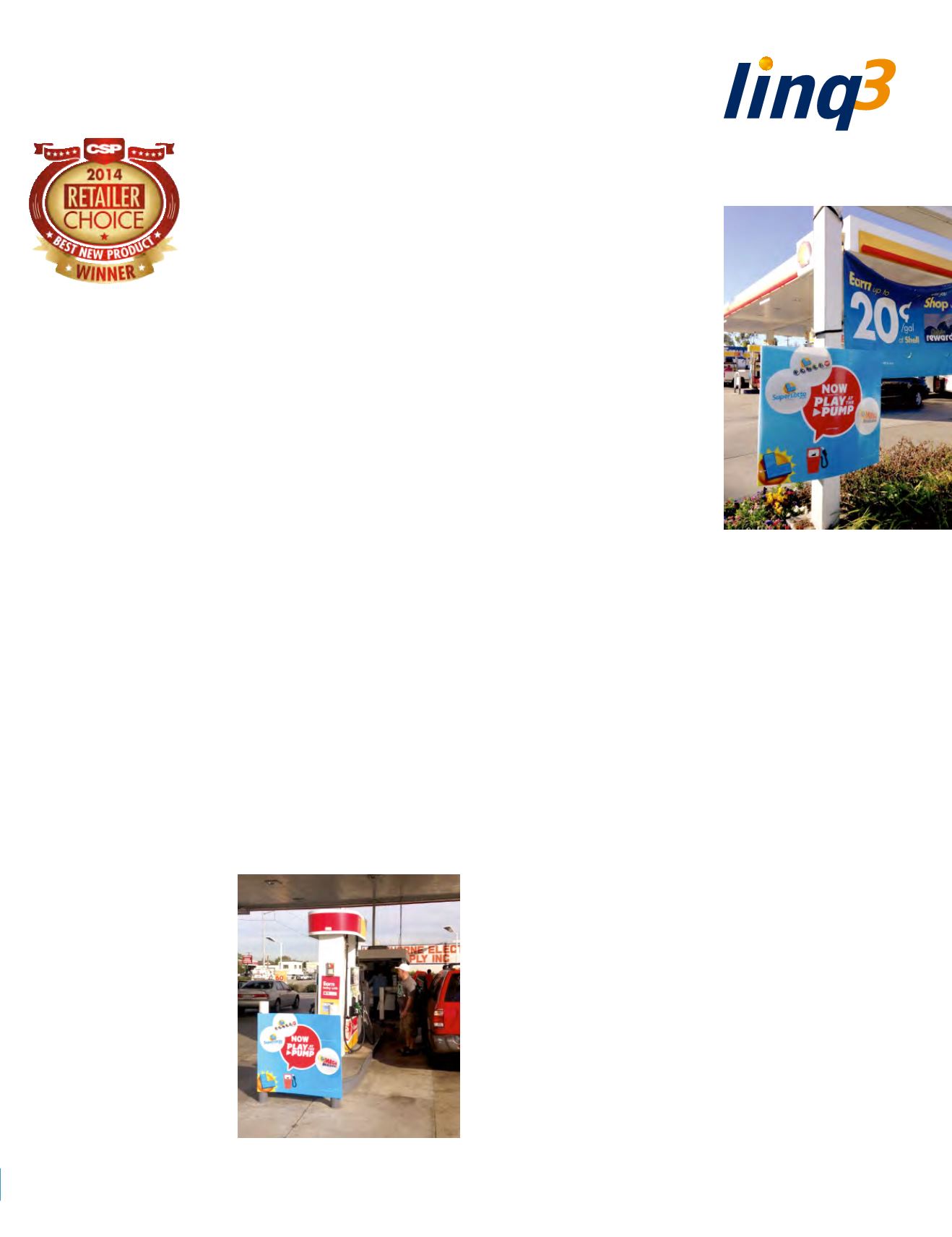
March/April 2015 // Public Gaming International //
45
Increasing the number of POS:
Today’s Highway to Increasing Sales
Included among the various opportunities lot-
teries have to increase sales are:
• Increase the number of products
• Enhance existing products
• Improve/increase advertising and promotion
• Maximize consumer access and ability to
buy the product
Making it easier for the consumer to buy lottery games is the most
reliable way to achieve the goal of increasing sales. That is why in-
creasing the number of retail stores is a top priority for almost all lot-
teries Increasing POS by other means (Self-serve Vending Machines,
making lottery available at the checkout lines in grocery and other
stores, penetrating new trade-styles and retail segments, etc.) is also a
top priority. And now, enabling the consumer to buy lottery tickets
at the gas pump is proving to be a most effective way to quickly and
dramatically increase the number of POS. Linq3’s Play-at-the-Pump
(PATP) solution does just that—enables the consumer to buy lottery
products right at the gas pump. The video monitor displays the offer
with appealing and explanatory graphics, and processes the purchase
transaction right at the gas pump. The amazing and wonderful aspect
of this solution that makes it possible for the consumer to buy lot-
tery products without going into the store is that it actually increases
store traffic at the same time. The increase in store traffic has been
measured to be between 4% and 7%. This result may seem a little
counter-intuitive, but frankly it’s not surprising. “Consumer engage-
ment is a theme that we are always talking about. The overall impact
of PATP on the entire business of convenience-store retailing is a per-
fect example of how an engaged consumer is more likely to buy more
of everything, not just lottery” says Daniel Cage, CEO of Linq3.
Play-at-the-Pump (PATP) transforms any unmanned POS into
highly interactive access points for the sale and advertising of lottery
products. By leveraging existing hardware, the Linq3 solution works
in partnership with existing lottery networks, allowing lotteries to ef-
ficiently reach whole new market segments, interacting with them in
a brand new way. Making
lottery available at the gas
pump gives the consumer
an entirely new access
point. More than that, it
gives both the retailer and
lottery visibility that en-
gages consumer attention,
increases lottery sales, and
drives store traffic. Follow-
ing is an appraisal of its im-
pact to date.
Linq3 PATP solution is
currently live in four states, with 211 pump locations and a total of
1,985 screens or points of access communicating lottery games and
their jackpots (average of 9.4 screens
per location). An additional 200 loca-
tions with almost 2,000 screens will
be activated beginning mid March.
The average PATP transaction ranges
from $7.00–$8.00. During big jack-
pot runs, the average transaction per
day typically exceeds $10.00. And
near and dear to the hearts of our re-
tail channel partners is that in-store
sales at PATP locations have increased
an average of 4-7%. During the re-
cent Powerball run, PATP stores saw a
significant increase in-store Powerball
sales in comparison to stores without
PATP in addition to their PATP sales.
Research & Data that Measures the Impact of PATP
Linq3 recently completed a market research study surveying over
1,600 lottery purchasers composed of frequent, occasional, infre-
quent, and non-lottery players. Below are key findings:
• Linq3’s offering has strong appeal with people that like lottery,
technology and convenience.
• The largest audience most interested in PATP skewed younger,
female, have more children at home, and are technologically savvy.
• The majority of respondents overwhelmingly like the conve-
nience of the PATP offering.
• PATP solution was found to increase annualized lottery purchases
by an average of 24 tickets per player.
• PATP appeals to new consumer groups, attracting consumers
who are not buying lottery products now. This fact suggests a
power to expand the market, capture incremental spending, and
penetrate new demographic segments.
• As with all lottery products, signage is key. Signage displayed at
the pumps demonstrated dramatic impact on the likelihood of
purchasing lottery tickets. On average, the number of consumers
who purchased tickets where there was a large sign at the pump
was more than twice than that of consumers who purchase tick-
ets where there was no sign at the pump.
The study clearly indicates that tapping into the purchasing power
of occasional, infrequent, and new players is based on convenience
and simplicity of play. Reaching these types of players has always
been a challenge, but PATP breaks through the barriers. Having lot-
tery games available where consumers are as opposed to where they
have to go to play is the future of the lottery business.
■


